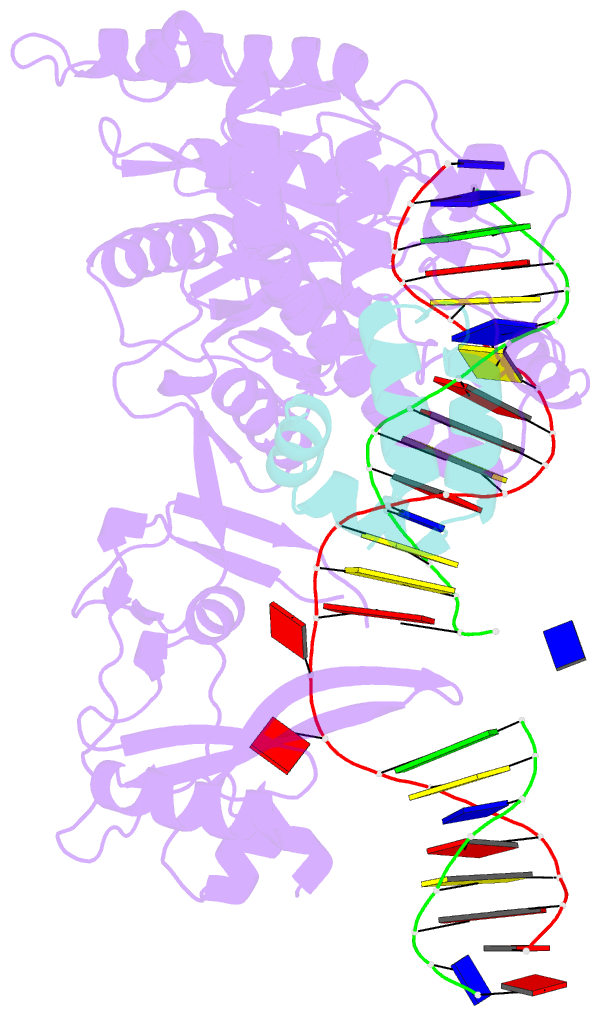Summary information and primary citation
- PDB-id
- 6cfi; SNAP-derived features in text and JSON formats;
DNAproDB
- Class
- DNA binding protein-DNA
- Method
- X-ray (3.36 Å)
- Summary
- Crystal structure of rad4-rad23 bound to a 6-4 photoproduct uv lesion
- Reference
- Paul D, Mu H, Zhao H, Ouerfelli O, Jeffrey PD, Broyde S, Min JH (2019): "Structure and mechanism of pyrimidine-pyrimidone (6-4) photoproduct recognition by the Rad4/XPC nucleotide excision repair complex." Nucleic Acids Res., 47, 6015-6028. doi: 10.1093/nar/gkz359.
- Abstract
- Failure in repairing ultraviolet radiation-induced DNA damage can lead to mutations and cancer. Among UV-lesions, the pyrimidine-pyrimidone (6-4) photoproduct (6-4PP) is removed from the genome much faster than the cyclobutane pyrimidine dimer (CPD), owing to the more efficient recognition of 6-4PP by XPC-RAD23B, a key initiator of global-genome nucleotide excision repair (NER). Here, we report a crystal structure of a Rad4-Rad23 (yeast XPC-Rad23B ortholog) bound to 6-4PP-containing DNA and 4-μs molecular dynamics (MD) simulations examining the initial binding of Rad4 to 6-4PP or CPD. This first structure of Rad4/XPC bound to a physiological substrate with matched DNA sequence shows that Rad4 flips out both 6-4PP-containing nucleotide pairs, forming an 'open' conformation. The MD trajectories detail how Rad4/XPC initiates 'opening' 6-4PP: Rad4 initially engages BHD2 to bend/untwist DNA from the minor groove, leading to unstacking and extrusion of the 6-4PP:AA nucleotide pairs towards the major groove. The 5' partner adenine first flips out and is captured by a BHD2/3 groove, while the 3' adenine extrudes episodically, facilitating ensuing insertion of the BHD3 β-hairpin to open DNA as in the crystal structure. However, CPD resists such Rad4-induced structural distortions. Untwisting/bending from the minor groove may be a common way to interrogate DNA in NER.





